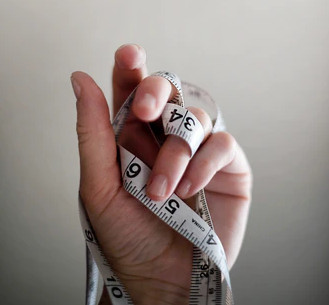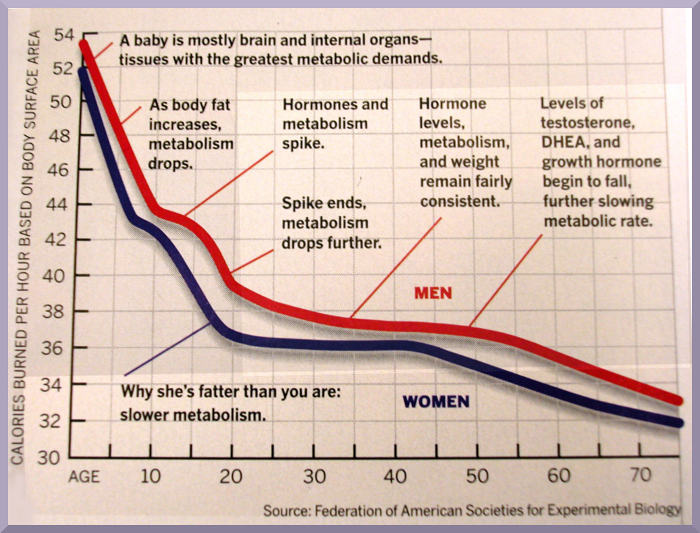 Let me ask you this. And pick wisely. If your choices were tomorrow developing that first cancerous cell in your lungs, brain, or pancreas, or an extra inch in your waist, which would you pick?
Let me ask you this. And pick wisely. If your choices were tomorrow developing that first cancerous cell in your lungs, brain, or pancreas, or an extra inch in your waist, which would you pick?
How many cancer-causing chemicals will be in your next bite of food? Hopefully, none.
This intellectual use rationalization pre-assumes substantial weight gain and then makes an incorrect judgment about relative risks.
First, recovery does not generate the "bulk" of cessation weight gain, eating does.
Long term, if unaddressed, a decrease in metabolism and return of a normal appetite may add extra kilograms or pounds. While 20% actually lose weight, the average one-year weight gain is 4 kg or 8.8 lbs, with most of the weight gained during the first three months. But if a smoker, you'd need to gain an extra 34 kilograms or 75 pounds to equal the health risks associated with smoking one pack-a-day.[1]
If a vaporer, while it may take decades before a fairly accurate e-cig risks assessment is available, hardly a week passes without a new study or news article suggesting harm or damage caused by nicotine, e-juice, flavorings, or vaping hardware (visit PubMed.gov and search "nicotine").
The more immediate recovery concerns are that week-one nicotine cessation water retention can be frightening (normally gone during week two), that healing senses of smell and taste will quickly make the lure of food more intense, and that nicotine stimulates the same brain dopamine pathways as food.[2]
It's common for the uneducated new ex-user to reach for extra food as a dopamine pathway stimulation replacement crutch.
While it can take up to 3 weeks for millions of extra nicotine fed dopamine pathway receptors to down-regulate to levels seen in never-users, it's also true that extra food use while waiting to feel normal again can add demoralizing pounds, while at the same time establishing horrible new eating patterns.
But that's the uneducated new ex-user. You're smarter than that.
You know in advance that a few weeks of elevated dopamine pathway wanting is coming.
You know you can pre-cut low-cal fresh veggies (cauliflower, squash, celery, cucumbers, broccoli, radishes, bell peppers and/or carrots) and make them as available in a bowl of chilling water, as a bag of candy, cookies or chips. Alternatively, you know that temporarily increasing your daily activity will aid in keeping weight gain to a minimum.
The low-energy density and high dietary fiber content of fruit and vegetables makes them perfect recovery weight control tools.
You also know that a nice cool glass of water, a big hug, or a deep deep breath stimulates the release of dopamine too.
What about your metabolism resetting to that of a non-user and nicotine no longer suppressing appetite via your body's fight or flight response?[4]
There, you understand that whether you remain nicotine's slave or not, that with aging, that if you wish to maintain your current weight, that you're going to have to learn to adjust to a declining metabolism anyway.

As we age, our metabolism declines as we become less active, lose muscle, add fat and experience hormone changes.
If wishing to maintain your current body weight, nicotine dependency recovery invites you to address your body's need for less fuel.
Overall, there are four choices. Do nothing and gradually add 5 to 10 pounds, increase your daily activity, decrease your calorie intake or a combination of the two.
Regardless, you're too smart to allow fear of weight gain to continue robbing you of freedom, healing, risk reversal, your time, coins, priorities, breathing, self-esteem, and life.
References:
2. Tang DW, et al, Food and drug cues activate similar brain regions: A meta-analysis of functional MRI studies, Physiology and Behavior, June 6, 2012, Volume 106(3), Pages 317-324.
3. Vergnaud AC, et al. Fruit and vegetable consumption and prospective weight change in participants of the European Prospective Investigation into Cancer and Nutrition-Physical Activity, Nutrition, Alcohol, Cessation of Smoking, Eating Out of Home, and Obesity study. Am. J. Clin. Nutr. 2012, Volume 95: Pages 184-193. 4. Harris KK, Zopey M, and Friedman TC, Metabolic effects of smoking cessation, National Review of Endocrinology. May 2016, Volume 12(5): Pages 299–308.
All rights reserved
Published in the USA
